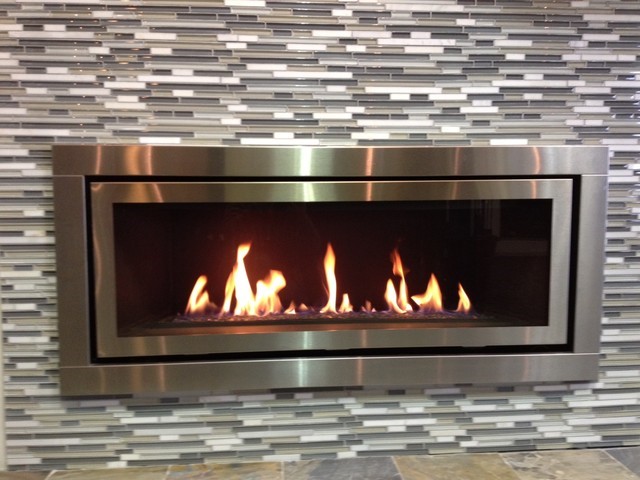Include in Your House Plans – Gas or Wood Fireplace?
When deciding whether to include a gas or wood fireplace there are five different areas to discern.
- Look-and-feel
- Cost
- Maintenance
- Convenience

- Environmental Responsibility
Your lifestyle and priorities will determine which of these areas are more important to you. Let’s discuss the different areas.
Look and Feel. This is all personal preference. Some prefer the look of real logs burning in the fireplace. Hearing the soft crackling of the wood as it burns is a delight to many people. Watching the wood turn into coals and gazing into the flames can be a mesmerizing experience. Others prefer the finished look of a gas fireplace, with the metal surrounds that are quite decorative, and the oftentimes realistic looking logs that put off a blue flickering flame just like at the beach. The difference is that most all gas fireplaces will have a glass barrier between you and the flame. Kind of takes the romance away.
 Cost- A wood burning fireplace needs an exterior chimney to be built of fireproof materials. This includes costs for materials and labor to install. A gas fireplace uses a venting system that can be run through the inside of the house and exit on the roof with inexpensive materials involved. The labor is also less specialized and therefore more affordable. You can pay high dollars for both kinds of fireplaces but generally a gas fireplace will cost less than a wood burning fireplace.
Cost- A wood burning fireplace needs an exterior chimney to be built of fireproof materials. This includes costs for materials and labor to install. A gas fireplace uses a venting system that can be run through the inside of the house and exit on the roof with inexpensive materials involved. The labor is also less specialized and therefore more affordable. You can pay high dollars for both kinds of fireplaces but generally a gas fireplace will cost less than a wood burning fireplace.
Maintenance-The wood burning fireplace has a chimney that we already discussed. This must be cleaned and inspected on a regular basis. The Chimney Safety Institute of America (CSIA) says that fireplaces need to be cleaned when there is 1/8″ of sooty buildup inside the chimney or flue system. When an accumulation of soot and creosote occurs it can fuel a chimney fire that will likely damage the chimney. Many chimney fires that start this way can spread to the roof and home. It is recommended that this be checked once a year. Don’t forget that you also have to clean the fireplace of the burned ash after several fires. This is a messy part of wood burning fireplaces.
Gas Fireplace venting systems should also be checked. Though not as likely to have a fire, the cleanliness of the venting will affect the efficiency of the fireplace. This can be included with your annual HVAC cleaning. There is not physical clean up after fires. Just turn it off.
Convenience-Wood burning fireplaces need…wood. Wood that has been seasoned at least one year. Kindling is also needed to start the fire. Many people enjoy the exercise of chopping wood and stacking wood. Remember that the wood needs to be dry to burn well. You can also use the Dura flame logs that you purchase at the store. You just need to remember to purchase them! Gas fireplaces do not need any of these materials. They are hooked up to a gas supply and basically you just turn it on. When you are done…you turn it off. Pretty simple
Environmental Responsibility-The dirty truth is that wood burning fireplaces emit 28 lbs. of particulate emissions per MMBtus of heat output (soot and ash) as opposed to natural gas which produces up to 99% less (about .28 lbs./MMBtu). This means that natural gas fireplaces pose less of a risk of in-home air pollution or smoking out one’s neighbors as well. Wood burning fireplaces might be cozy and soothing, but they are adding to the already polluted air in your home and in your neighborhood.
Whether you are building a new home or remodeling your existing home, weigh all of your choices before making a decision and don’t forget to check your house plans. You may not have the chimney space in your home plans to accomodate a wood fireplace. In this case the decision is made for you!
